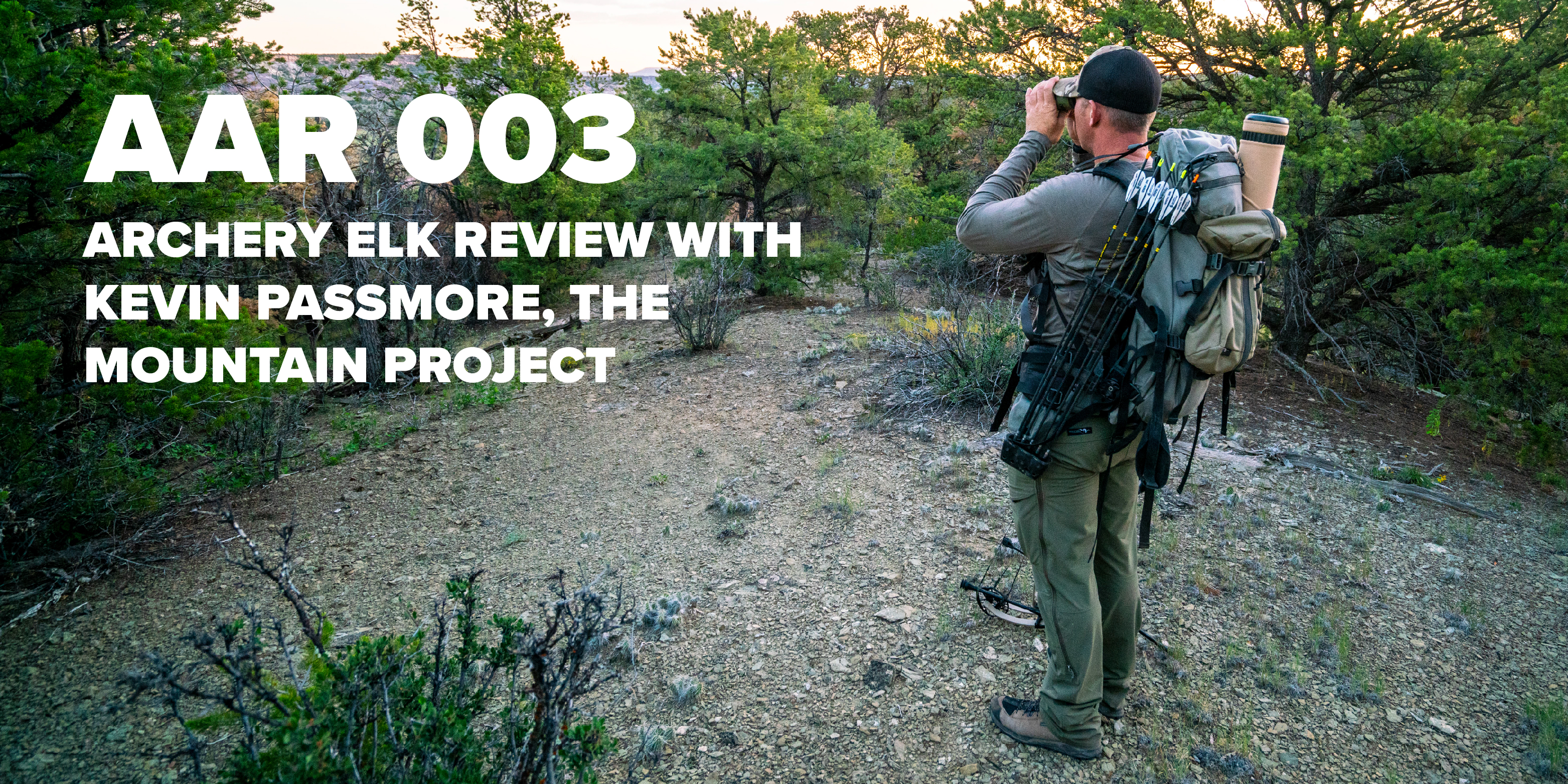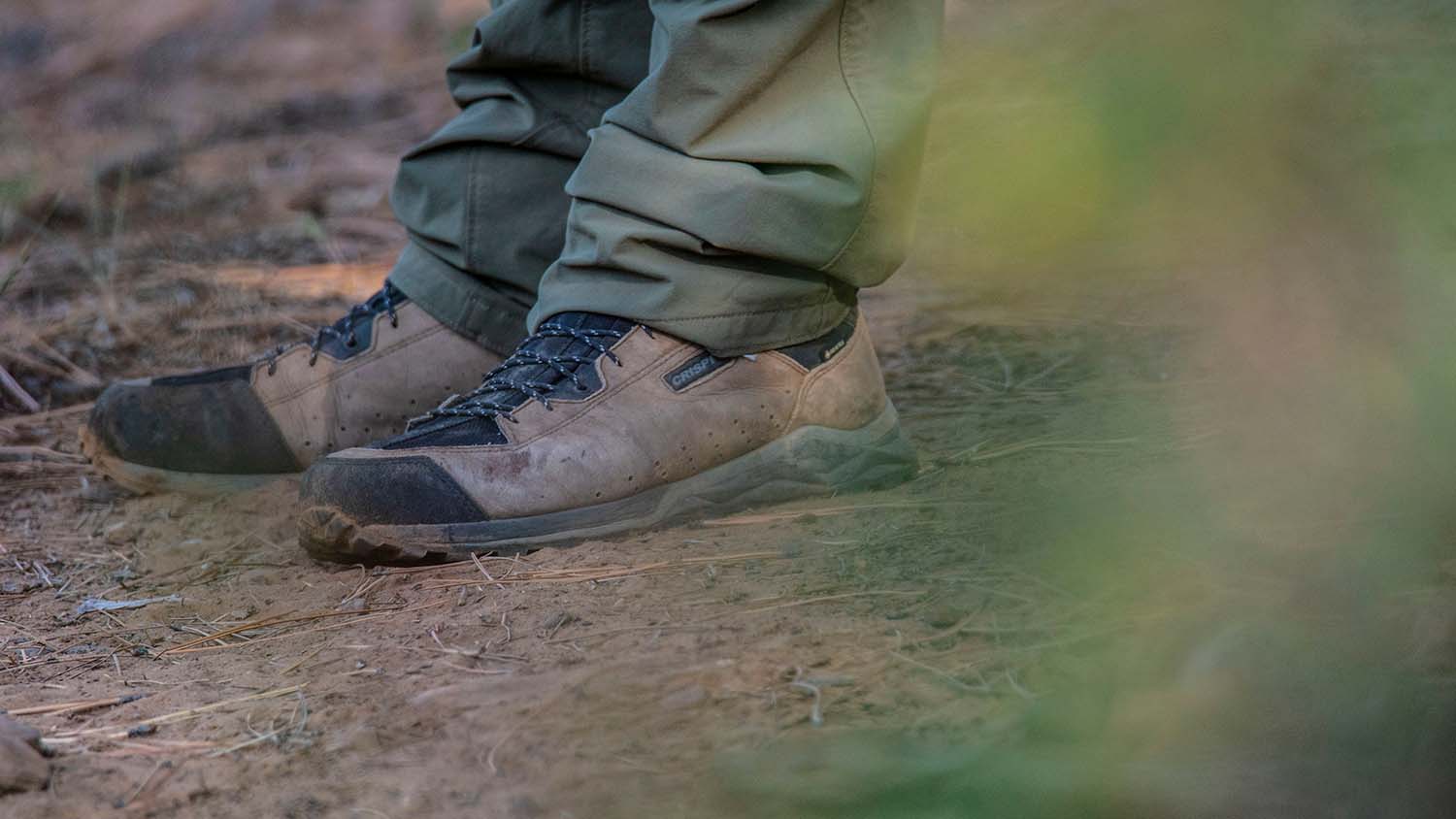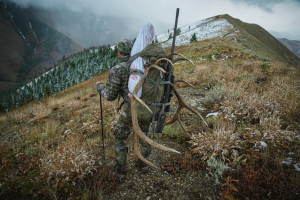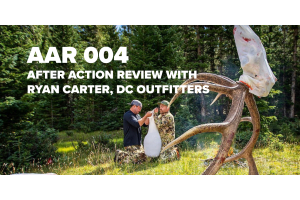After Action Report - Archery Elk Season pt. 2

The US Military uses AARs as a structured review or de-brief (debriefing) process for analyzing what happened, why it happened, and how it can be done better by the participants and those responsible for the project or event.
The goal of this article is to look back on the season and give our audience a preview of some lessons you learned. Speaking from personal experience, everytime I go hunting, there are things that I do right, and things that I do wrong. Looking back on these can help us become better hunters, and by sharing these with others, maybe they can learn from our successes and mistakes.
In this AAR, we talk archery elk hunting with Kevin Passmore from The Mountain Project.

Lessons Learned from Archery Season:
Q: What are 1-2 things you did right this season?
A: One thing I did right this season was stay patient and persistent. I found elk and they were not very active but instead of leaving them I stayed with them till I had my shot. Learning their movements and behaviors while buying time. The morning I killed my bull, I was catching up to them from a hunter driving through the herd. I stayed quiet till I was under 150 yards, cow called to let him know I was there, then sat quietly. Staying patient till he came through at 30 yards broadside.
Q: What are 1-2 things you did wrong this season, even if you did end up killing an elk?
A: One big mistake I made was to locate elk in the evening away from their bedding area and did not stay long enough to see which way they were headed. When I had quiet mornings I wished I would have stayed later to listen which way they headed for water. One water was to the east and one to the west. If I had known the direction they went in the evening, my mornings would have been a little more active knowing which direction to start in.
Q: What two lessons from the season will you implement next year to increase your chances of success?
A: More night driving and bugling, locating elk with their direction of travel or darkness hang out spots. Finding bulls at night and marking their location I have done, but I don't do it enough or long enough.

Elk Hunting Questions:
Q: Scenario: you draw a tag in a unit you’ve never hunted/been to before...where do you start?
A: That was this year! I had never been to the unit in my entire life. I started on Basemaps, scanning for water sources that were marked and unmarked. I marked them and started at the top working my way south checking every single, one making notes; was it dry, elk sign, old elk sign, fresh sign, wallows fresh or not. Then I built an idea on elk and locations of the tanks with sign and started going out at night bugling marking bulls that were talking on my map. I narrowed it down to one big area then started watching roads for tracks, rubs and more fresh sign. That process determined where I would hunt.
Q: If you had only one week to hunt during September, which would you pick & why?
A: If I could choose the week it would be the 12th-19th, no moon and overcast with some light rain. I'll take any week I can get in September, but the middle has been very productive for me in my years of hunting.
Q: Can you give a short run-down on your strategy for calling elk? When do you cow call, when do you bugle, etc...
A: I typically cow call to see if the bull is responsive. If not I'll try a bugle after some time to see if he responds to that. If he does then I will only bugle once and awhile to keep him talking while closing in. If he answers a cow call, I try and get close to make it easy on him to check me out. I'm never super aggressive with a cow call and I keep them soft. Another technique I use is to blow the call in the direction behind me, away from the bull, making it seem like I am further away than I actually am. I've had success bugling and cow calling for friends, making it sound like a bull with some cows together, at times when other calling sequences didn't work.
Q: Spotting scope or binos on a tripod? Or both, dependent on where you’re hunting?
A: If I'm in a unit that is glassable I always have a spotting scope and a tripod. No matter what, I'll always have 10x power binoculars on my chest and a tripod. Too many times I've needed the tipod to look hard for something, from wounded animals or dead animals to bedded animals. A tripod is a huge key to finding something you would not see off-hand glassing. That said, I always have my tens and tripod, and occasionally if the land permits, I want a spotting scope to see what the bull looks like so I'm not wasting time walking to get a closer look.
Q: What are your top two tips for finding elk in a new area?
A: Learning to read water tank sign (is it fresh or is it old?), and watching for elk sign while driving roads, looking for rubs and tracks. Tanks can have sign but often it can be old. Observe by watching the water levels as they drop in comparison to the tracks or wallows. Is the mud really dry or just a bit? All of these tell stories about how old the sign is. Heavily traveled roads and elk tracks can let you know how fresh they are. We drive enough that I’ve learned to pay attention the entire time for tracks and rubs.
Q: What is your favorite way to prepare elk meat?
A: Fried elk heart in bacon grease, or just a good loin steak with salt ‘n pepper grilled over mesquite to medium, or elk burgers...I could go on and on, it's all amazing!

Boot Questions:
Q: What are your go-to Crispi boots for archery elk hunting?
A: If it's a lower elevation hunt with a chance of rain only I go with the Attiva Mid GTX, my favorite boot so far. If it's higher elevation with rain or possible snow I go with an insulated boot, like the Guide GTX.
Q: Does your decision on model change depending on conditions? Area? Style of hunting?
A: In lower elevation, I want a more tennis-shoe-style light boot, so the Attiva Mid GTX works perfectly. At higher elevation with timber and heavier weight on my back, or if I'm backpacking, I want a stiffer, stronger boot like the Guide GTX.
Q: What specific features make an archery elk hunting boot different from say a rifle season boot, or a spring bear hunting boot?
A: Typically there is warmer climate and temps, plus you walk a lot keeping up with elk or locating the elk. I want a light boot that is comfy for putting on big miles in hot conditions while being quiet when closing the distance. I like to feel the ground and what's beneath my foot.
Q: Scenario: you get a new pair of Crispis one month before elk season begins...What does your process of getting those boots ready to hunt look like? (Break-in, conditioning, etc.)
A: My break in is easy, I work outside and wear the boots to work until I feel they are broken in. A couple scouting trips in them will tell me when they are ready to go! Doesn’t take long with my Crispis!
About The Mountain Project:
We are dedicated to creating the most compelling, best-filmed, best-edited hunting, fishing, and off-road video content on any digital platform.
We are a reminder that hunting is a fun and normal human activity.
We love responsibly sourcing wild protein, and paying for it with our time, money, and effort. We love the physical and mental difficulty of the hunt. We love the relationships formed while carrying a bull elk out of a deep canyon. We crave the adventure of getting to, and being in big mountains that pay us zero kindnesses, and are completely indifferent to our presence. It’s in these places, doing these things, that we find deep meaning and purpose. And we carry along cameras to tell the stories we find there.
Check out their latest film: "One Arrow - 2021 New Mexico Archery Elk Hunt"






